Upgrade your home's climate control with a cross-over high-efficiency heat pump and potentially slash your heating and cooling energy usage by up to 50% compared to traditional systems. This means lower utility bills and a consistently comfortable home environment. If you're tired of battling fluctuating indoor temperatures and watching your energy costs climb, a system that moves heat instead of generating it offers a smarter, more reliable solution.
This guide will reveal how cutting-edge inverter-driven compressors, exceptional efficiency ratings, and valuable federal incentives come together to deliver unparalleled savings, unwavering comfort, eco-friendly operation, flexible dual-fuel capabilities, and effortless smart-home integration.
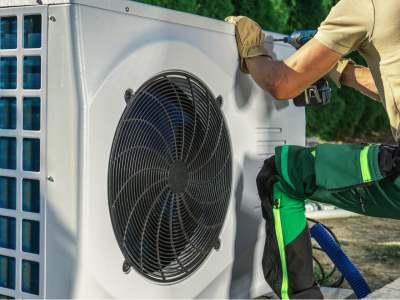
We'll dive into:
- The ingenious energy-saving technology behind cross-over systems
- How superior temperature and humidity management ensures year-round comfort
- The environmental advantages and innovative refrigerants that set them apart
- The flexibility of dual-fuel options for optimized heating and cooling
- Advanced features, cost comparisons, and the financial incentives available
Consider this your comprehensive guide to understanding, selecting, and maximizing the long-term value of a cross-over high-efficiency heat pump over older, conventional alternatives.
What Makes Cross-over Heat Pumps a Smarter Choice for Energy Efficiency?
Cross-over heat pumps achieve remarkable efficiency by employing inverter compressors and variable-speed technology. This allows them to precisely match their heating or cooling output to your home's exact needs, rather than simply cycling on and off at full blast. This intelligent modulation significantly reduces energy spikes and maintains your desired comfort level with minimal electricity use, delivering savings that traditional single-stage heat pumps simply can't match. Understanding these core technologies is key to appreciating the specific efficiency metrics and cost advantages they offer.
How Do Inverter Compressors Elevate Heat Pump Efficiency?
An inverter compressor dynamically adjusts its motor speed to maintain your target temperature, effectively eliminating the energy waste associated with frequent start-stop cycles and temperature overshoots. By gradually ramping up or down, the system delivers steady, consistent output, which:- Boosts efficiency when operating at partial capacity and lowers electricity demand
- Reduces stress on system components, contributing to a longer lifespan
- Smooths out temperature fluctuations for a more stable and comfortable indoor environment
Unlock Significant Energy Savings with Inverter Heat Pumps
Inverter heat pumps, with their ability to fine-tune compressor speed based on heating or cooling demands, can dramatically cut energy consumption by eliminating the energy losses inherent in frequent start-stop cycles. These advanced systems can outperform traditional furnaces, boasting a Coefficient of Performance (CoP) ranging from 3 to 5, meaning they generate 3 to 5 units of heat for every single unit of electricity consumed.
Understanding SEER, HSPF, and COP: Your Guide to Heat Pump Performance
Efficiency ratings serve as crucial benchmarks, quantifying a heat pump's performance under standardized conditions to help you make informed comparisons between different models.| Metric | What it Measures | Typical Performance Range |
|---|---|---|
| SEER | Seasonal Energy Efficiency Ratio; indicates cooling efficiency | 15–25 |
| HSPF | Heating Seasonal Performance Factor; indicates heating efficiency | 8–12 |
| COP | Coefficient of Performance; the ratio of heat output to energy input | 3.0–4.5 |
These ratings clearly illustrate how effectively a heat pump converts electricity into heating or cooling. Higher SEER, HSPF, and COP values directly translate into lower energy usage and reduced operating expenses, underscoring the distinct advantage of cross-over systems over conventional two-stage units.
Decoding Heat Pump Efficiency Ratings for Smarter Choices
Heat pump efficiency is measured by the Seasonal Energy Efficiency Ratio (SEER) for cooling and the Heating Seasonal Performance Factor (HSPF) for heating. Higher SEER and HSPF ratings signify greater efficiency, leading to lower energy consumption and reduced operating costs. For instance, a heat pump with a SEER of 18 will use less electricity than one with a SEER of 14 to deliver the same level of cooling.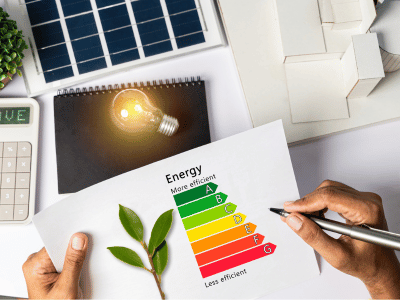
Quantifying Your Energy Cost Savings with a Cross-over Heat Pump
To truly grasp the financial benefits of upgrading to a more efficient system, let's look at typical annual savings:
- Expect a 30–50% decrease in heating-season electricity usage compared to electric resistance heating.
- See your annual energy bills shrink by $800–$1,500 when replacing older single-stage heat pumps.
- Accelerate your return on investment by combining these savings with available incentives.
Leverage Federal Tax Credits and Local Rebates for Your High-Efficiency Heat Pump
Further reduce your upfront investment by taking advantage of available incentives:- The Inflation Reduction Act provides a federal tax credit covering 30% of installation costs, capped at $2,000 per qualifying system.
- Numerous states and utility providers offer rebates ranging from $300 to $1,500 for ENERGY STAR® certified heat pumps.
- Local energy efficiency programs may offer additional appliance rebates alongside broader home performance incentives.
Maximize Your Savings with Federal Tax Credits for Heat Pumps
The Inflation Reduction Act offers a valuable federal tax credit that covers 30% of installation costs for eligible heat pumps, up to a maximum of $2,000 per system. To claim this credit, homeowners will need to complete and file IRS Form 5695.
Experience Unmatched Comfort: How Cross-over Heat Pumps Elevate Your Home Environment
Cross-over systems excel at delivering consistent comfort by continuously adjusting their output to match real-time conditions, effectively eliminating the jarring temperature swings often experienced with conventional single-stage equipment. Their variable-speed operation, advanced humidity control, and robust cold-climate performance work in harmony to create a stable and pleasant indoor atmosphere, regardless of how extreme the weather gets outside.
How Does Variable-Speed Operation Ensure Stable Indoor Temperatures?
Variable-speed compressors and fans precisely modulate airflow and heat output in small increments, eliminating the disruptive on/off cycles that cause rapid temperature fluctuations. This sophisticated modulation:- Maintains indoor air temperatures within a tight ±1°F range of your setpoint
- Minimizes distracting noise from full-power system starts and stops
- Eliminates uncomfortable drafts and the creation of hot or cold spots
The Crucial Role of Humidity Control in Enhancing Indoor Air Quality
Cross-over heat pumps feature enhanced dehumidification capabilities, effectively managing moisture levels during both cooling and heating cycles. By efficiently removing excess humidity, these systems:- Improve perceived comfort by making the air feel less sticky, without overcooling the space
- Discourage the growth of mold and bacteria on indoor surfaces
- Contribute to a healthier indoor environment, especially beneficial for individuals with allergies or asthma
How Do Cross-over Heat Pumps Perform in Extreme Weather Conditions?
Equipped with advanced vapor-injection technology and specialized cold-climate refrigerants, cross-over units can maintain over 75% of their heating capacity even when outdoor temperatures drop to -4°F, and they can operate efficiently in conditions as low as -22°F. On the cooling side, their high SEER ratings ensure your home remains comfortably cool during the hottest summer days. This broad operating range significantly surpasses the limited performance of many conventional heat pumps when faced with extreme temperatures.
Can Cross-over Heat Pumps Support Zoning for Personalized Comfort?
With the option for multiple indoor units and electronically controlled dampers, homeowners can create customized heating and cooling zones tailored to specific room usage and occupancy patterns. This zoning capability provides:- Personalized temperature settings for bedrooms, living areas, or home offices
- Targeted energy savings by reducing conditioning in unoccupied zones
- Enhanced overall system efficiency by precisely matching output to room-by-room demand
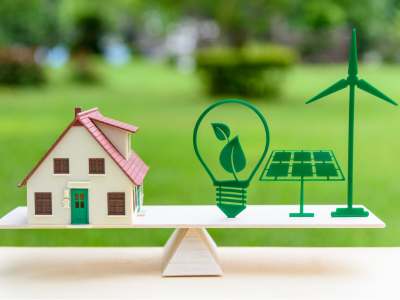
Why Cross-over Heat Pumps Offer a Greener Alternative to Conventional Heating
By utilizing electricity to transfer heat rather than burning fossil fuels, cross-over heat pumps significantly reduce greenhouse gas emissions and facilitate the integration of renewable energy sources. Their enhanced efficiency and use of advanced refrigerants further shrink your carbon footprint, aligning your home comfort with crucial sustainability objectives.
How Do Cross-over Heat Pumps Reduce Your Carbon Footprint and Greenhouse Gas Emissions?
As electric heat transfer systems, they produce no on-site combustion byproducts and can leverage the increasing availability of clean energy from the grid. Compared to traditional natural gas or oil furnaces, a high-efficiency heat pump can:- Cut annual CO₂ emissions by an estimated 2–5 metric tons per household
- Support broader electrification strategies aimed at decarbonizing buildings
- Improve overall home energy efficiency, thereby reducing total energy demand
The Significance of Electrification and Renewable Energy Integration
As the electricity grid increasingly relies on renewable sources like wind, solar, and hydropower, electrified heating and cooling systems become progressively more environmentally friendly. Heat pumps are particularly well-suited to:- Seamlessly integrate with rooftop solar panel installations
- Facilitate off-peak battery charging and thermal storage strategies
- Enhance grid resilience by helping to stabilize demand peaks
How Do Modern Refrigerants in Cross-over Heat Pumps Lower Global Warming Potential?
Newer refrigerants, such as R-32 and various low-GWP blends, are designed to reduce direct emissions from leaks by over 60% compared to older HFCs. These next-generation substances:- Maintain high thermodynamic performance, ensuring excellent efficiency
- Minimize environmental impact in the rare event of a leak
- Comply with evolving regulatory standards for refrigerant safety and environmental impact
Discover the Advantages of Dual-Fuel Capability in Cross-over Heat Pumps
Dual-fuel cross-over systems ingeniously combine an electric heat pump with a gas furnace backup, optimizing performance across a wide spectrum of outdoor temperatures. This hybrid approach leverages the strengths of both technologies to deliver maximum efficiency and consistent comfort.
How Does Combining an Electric Heat Pump with a Gas Furnace Enhance Heating Efficiency?
During milder outdoor temperatures, the heat pump efficiently handles the heating load using electricity. However, if temperatures dip below a predetermined threshold, the gas furnace automatically engages to maintain optimal heating capacity and prevent defrost cycles from reducing the heat pump's output. This synergistic operation:- Guarantees consistent warmth, even in sub-zero conditions
- Minimizes electricity consumption during periods when the heat pump operates less efficiently in cold climates
- Extends the lifespan of your equipment by balancing the workload between two distinct heat sources
Experience the Benefits of Dual-Fuel Heat Pump Systems
Dual-fuel heat pump systems expertly combine an electric heat pump with a gas furnace backup, optimizing performance across a broad range of temperatures. This hybrid approach merges the best attributes of both technologies for peak efficiency and comfort. Dual-fuel heat pump systems are exceptionally energy efficient because they seamlessly switch to the most efficient heating source—either the heat pump or the furnace—depending on the prevailing outside temperature.
What Are the Advantages of a Compact, All-in-One Heating and Cooling Unit?
Integrating both heating and cooling functions into a single outdoor unit offers significant space savings and simplifies the installation process. Key benefits include:- A reduced equipment footprint, freeing up valuable space on patios or rooftops
- Streamlined maintenance due to shared ductwork or refrigerant plumbing
- Unified controls that ensure seamless transitions between heating and cooling modes
How Can Cross-over Heat Pumps Be Integrated with Existing HVAC Systems?
Cross-over units offer flexible integration options, whether retrofitting into conventional ducted systems or augmenting existing mini-split setups. Conversion possibilities include:- Replacing your current outdoor condensing unit while keeping your existing indoor air handler
- Connecting to existing ductwork with matched evaporator coils for central air distribution
- Adding new comfort zones using ductless indoor units for targeted climate control
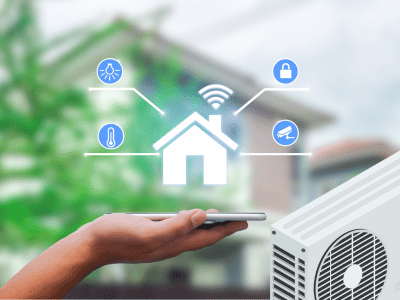
How Advanced Technology Elevates Cross-over Heat Pump Performance and Smart Home Integration
Modern cross-over systems seamlessly integrate cutting-edge inverter compressors, intelligent controls, and sophisticated diagnostic tools to optimize efficiency, enhance comfort, and elevate the overall user experience. These technological advancements streamline maintenance procedures and provide effortless automation for your home's climate control.
What Are the Benefits of Inverter Technology for Quiet, Precise Temperature Control?
By continuously adjusting its compressor speed to precisely match your home's heating or cooling demand, inverter technology delivers:- Whisper-quiet operation, with outdoor unit noise levels as low as 45 dBA
- Exceptional indoor temperature stability, maintaining settings within a narrow 1°F band
- Reduced wear and tear on system components, leading to longer service intervals
How Do Smart Thermostats and Home Automation Optimize Energy Usage?
Smart thermostats, connected via Wi-Fi, learn your household's occupancy patterns and automatically adjust temperature settings accordingly. Key features include:- Adaptive scheduling that aligns with your family's daily routines
- Convenient remote control via mobile apps, allowing you to manage comfort from anywhere
- Seamless integration with voice assistants and home energy monitoring dashboards
Unlock Energy Savings with Smart Thermostats
Smart thermostats are powerful tools for generating significant energy savings, often reducing heating and cooling costs by 10-15% annually. These intelligent devices learn from your habits and local weather patterns, automatically adjusting settings to maintain comfort while minimizing energy consumption.
What Other Advanced Features Enhance User Experience and System Diagnostics?
Cross-over heat pumps often come equipped with:- Integrated diagnostic sensors that monitor critical performance indicators like airflow, refrigerant charge, and overall system status
- Cloud-based monitoring platforms that enable real-time troubleshooting and proactive maintenance alerts
- Self-calibrating defrost cycles designed to minimize operational interruptions
Comparing the Total Cost of Ownership: Cross-over vs. Conventional Heat Pumps
A thorough evaluation of both initial installation costs and ongoing operational expenses reveals the true value proposition of cross-over systems. While they may involve a slightly higher upfront investment, their lower operating costs and extended service life result in a more favorable lifetime cost comparison.
What is the Initial Installation Cost Difference Between Cross-over and Conventional Heat Pumps?
| System Type | Estimated Installation Cost | Key Equipment Features |
|---|---|---|
| Conventional Single-Stage Unit | $8,500–$10,000 | Basic single-stage operation |
| Cross-over High-Efficiency Unit | $10,500–$12,500 | Inverter technology, variable-speed, potential dual-fuel capability |
How Do Operating Costs and Energy Savings Impact Long-Term Return on Investment?
Cross-over heat pumps significantly reduce annual energy bills, often by hundreds of dollars, thereby shortening the payback period. Over a typical 15-year equipment lifespan, the savings generated from lower utility bills can surpass the initial price premium by 20–30%, whereas conventional systems might only achieve a break-even point after two decades.
What is the Typical Payback Period for Investing in a Cross-over Heat Pump?
Homeowners can generally expect to recoup the additional upfront investment within 6–10 years. This timeframe can vary depending on factors such as your climate zone, typical usage patterns, and the availability of incentive programs. Once the initial investment is recouped, the system continues to deliver net savings throughout its remaining operational life.

Maximize Your Investment: Financial Incentives for Cross-over High-Efficiency Heat Pumps
By strategically leveraging federal, state, and utility programs, you can reduce the net cost of your new system by 20–40%, transforming an efficiency upgrade into an immediate financial benefit. It's essential to understand the application processes and eligibility requirements for each program to maximize your savings.
Understanding the Federal Heat Pump Tax Credit Under the Inflation Reduction Act
The Inflation Reduction Act's Section 25C tax credit offers:- A credit equal to 30% of qualified installation costs, with a maximum annual limit of $2,000 per unit
- Eligibility for systems that meet ENERGY STAR certification standards
- The ability to claim the credit on IRS Form 5695 for tax years through 2025
Commonly Available Local and Utility Rebates for Heat Pumps
State energy offices and local utility providers frequently offer:- Fixed rebates ranging from $300 to $1,500 for the installation of high-efficiency units
- Performance-based incentives that are calculated based on measured improvements in HSPF or SEER ratings
- Bundled home performance packages that combine HVAC upgrades with improvements like insulation
How to Check Eligibility and Claim Your Incentives
To successfully secure these valuable incentives:- Review the federal eligibility criteria outlined in IRS guidance for Section 25C.
- Visit the websites of your state energy office or local utility providers to identify available rebates.
- Keep all equipment specification sheets and original invoices for your records.
Conclusion
By combining the installation of a cross-over high-efficiency heat pump with available financial incentives, homeowners can achieve maximum financial and environmental benefits, making the decision to upgrade both easier and more cost-effective in the long run.
Transitioning from conventional heat pumps to advanced cross-over high-efficiency models delivers undeniable advantages in performance, comfort, and sustainability. These sophisticated systems utilize state-of-the-art inverter compressors, precise climate control, and versatile dual-fuel capabilities to maintain a comfortable home environment while significantly reducing operating costs. Environmental benefits are realized through lower carbon emissions and the use of next-generation refrigerants, complemented by smart controls and diagnostics that simplify maintenance. By pairing enhanced efficiency with valuable federal tax credits and local rebates, homeowners can optimize both their comfort and their investment returns.
Engle Services offers Heat Pump Installation, Heat Pump Repair, and Heat Pump Maintenance in Sylacauga, Talladega, Birmingham, Shelby County (Hoover, Chelsea), Alabaster, Pell City, Dadeville, Wetumpka, Montgomery, Fort Walton Beach (Florida) and all their surrounding areas.
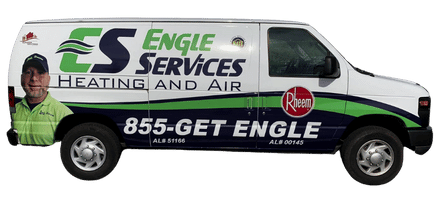 Ready to schedule with our team of HVAC Technicians, Electricians, and Plumbers?
Schedule an appointment online or give us a call at (855) GET-ENGLE
Ready to schedule with our team of HVAC Technicians, Electricians, and Plumbers?
Schedule an appointment online or give us a call at (855) GET-ENGLE
